The American parasol, scientifically known as Leucoagaricus americanus, is an urban-loving mushroom species that appears in summer and fall. It is common in identification groups simply because of its propensity to appear where humans are. American parasols appear in sawdust piles, landscaped areas, disturbed ground, and in wood chips. This species is edible, but extreme caution is advised because it has a very tricky and toxic lookalike.
- Scientific Name: Leucoagaricus americanus
- Common Names: American Parasol, Redding Lepiota, White Parasol
- Habitat: Landscaped, disturbed ground
- Edibility: Edible, with caution
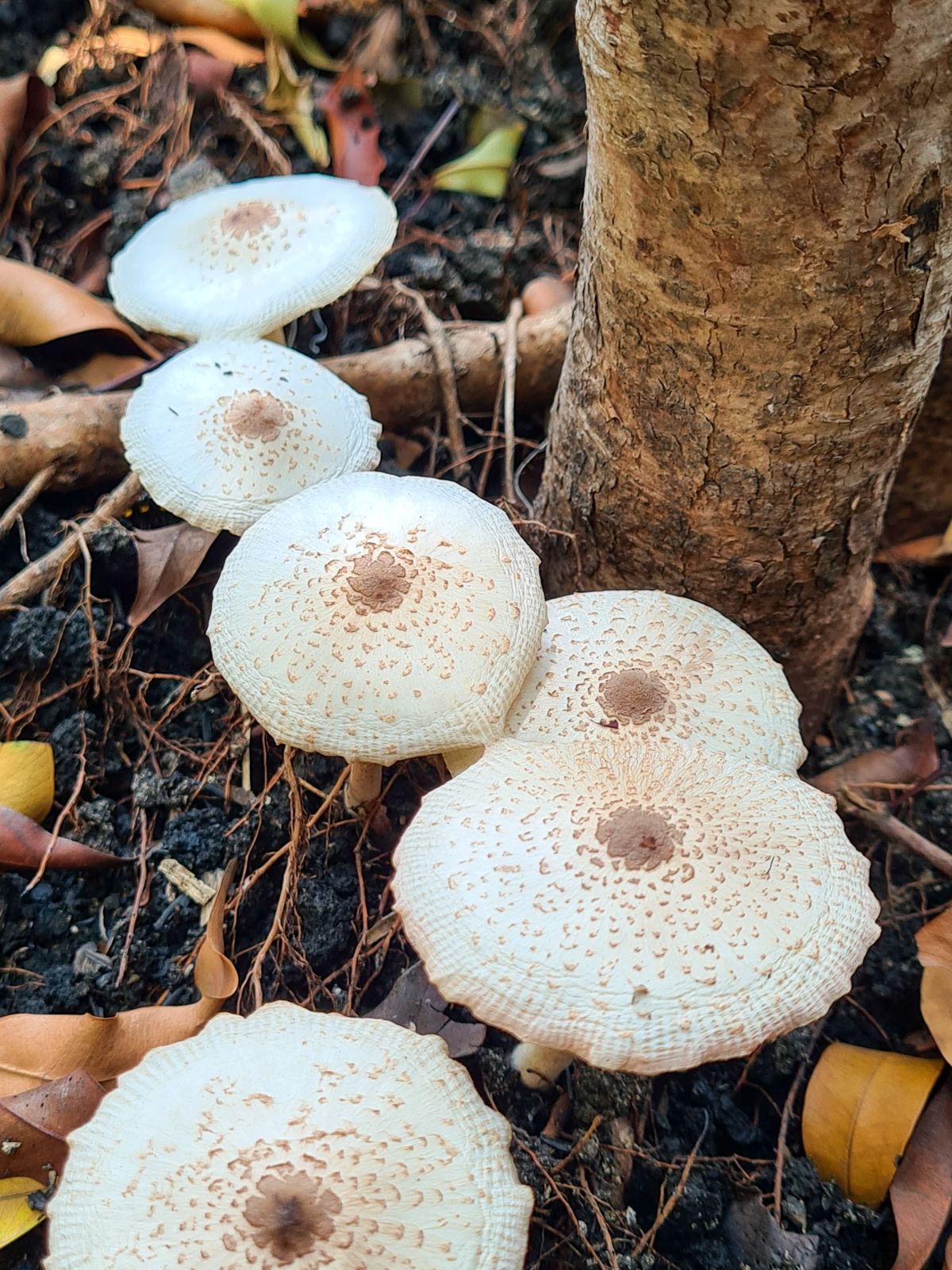
Jump to:
All About The American Parasol
American parasol mushrooms grow predominantly in human-disturbed and urban landscapes. It is a very large mushroom and is quite hard to miss. Many people who stumble (sometimes literally) across this mushroom are awed by its size, coloring, and stature. It stands tall and grand among the wood mulch.
While this species is edible, it should only be foraged by experienced mushroom hunters. There is a very toxic, though not deadly, species that looks almost identical – the false parasol, also known as the green Lepiota.
The American parasol was first described by Charles Horton Peck, a renowned American mycologist, in 1869. Its common name, the “American parasol,” is a reference to its umbrella-like shape and American origin. It is also known as “Reddening Lepiota” due to the reddening of its cap and stem with age.
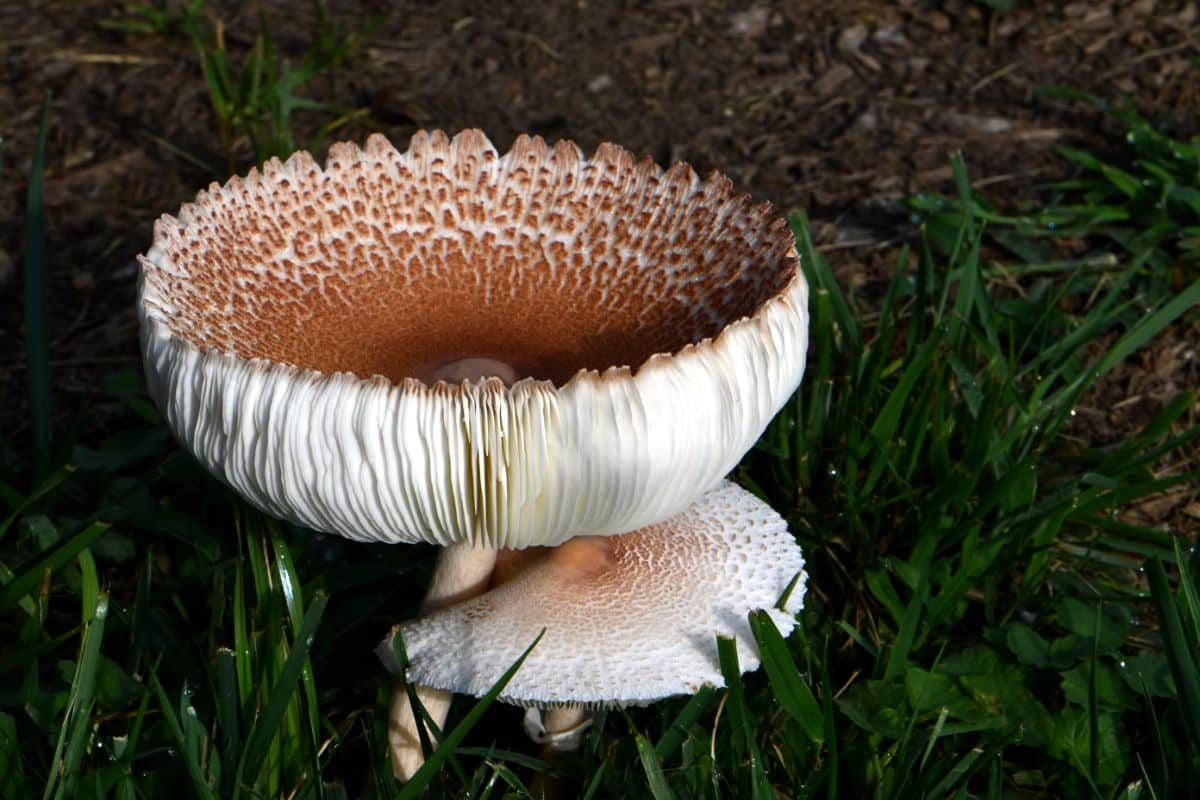
Identifying The American Parasol
Season
The mushroom typically appears in summer and fall.
Habitat
The American parasol is a saprobic mushroom, which means it thrives on decaying organic materials. It’s commonly found on sawdust, wood chips, stumps, and on disturbed ground. It grows in urban areas, such as parks, landscaping sites, and gardens, where woodchips or mulch are present. This species is widely distributed in North America but is more prominent east of the Rocky Mountains. It may grow alone but more commonly appears in scattered or dense groupings.
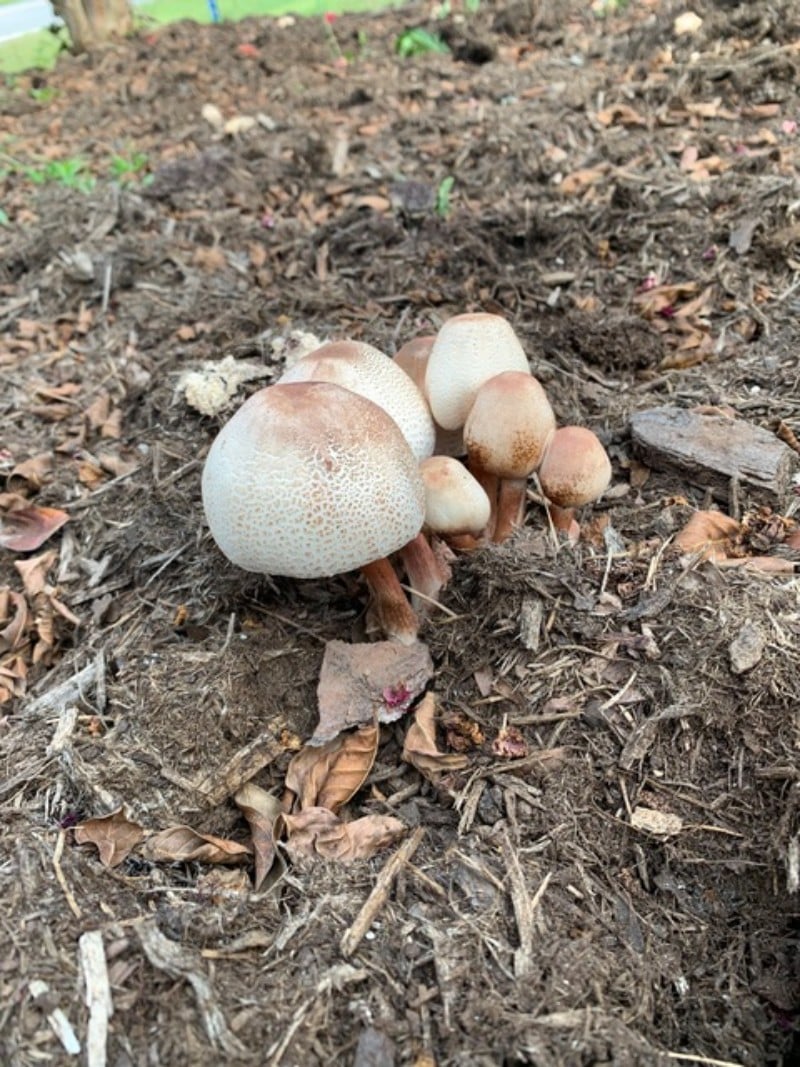
Identification
Cap
The cap of the American parasol measures about 1.2 to 5.9 inches. It starts out rounded, like a button mushroom. As it matures, the cap expands and becomes umbrella-shaped to flat. In the center of the cap is a distinctive upraised reddish-brown hump or “nipple.” The cap is dry and smooth when young but gradually develops reddish to reddish-brown scales. With maturity, the scales take over, and the overall appearance is a white or tannish cap with prolific reddish-brown scales covering it. The cap also reddens after being handled.
Gills
The gills of this mushroom are free from the stem and are closely spaced. There are lots of short gills (gills that don’t reach the stem) intermixed with the longer gills. They are white when young but become pinkish to deep maroon with age or when bruised. In youth, the gills are covered by a white veil.
Stem
The stem is 2.8 to 5.5 inches long and often enlarged at or below the middle and then tapered towards the base. It is white when young but ages to pink or reddish-brown. It quickly stains yellow when handled, then turns reddish. The stem is smooth and may be covered with white silky fibers.
Around the upper portion of the stem is a white, thick, double-edged ring. This is a remnant of the veil that covered the gills when very young. With maturity, the veil breaks, leaving this ring around the stem. The ring stains reddish, and it may fall off with age. Even though the ring may fall off, there is usually a noticeable reddish-brown line where it once was.
Flesh
The flesh is white throughout and thick. It discolors to yellow or orange when bruised or cut and dries to reddish when mature.
Odor and Taste
The mushroom does not have a distinctive odor or taste. Some describe its odor as slightly spicy.
Spore Print
The spore print of this species is cream to white in color,
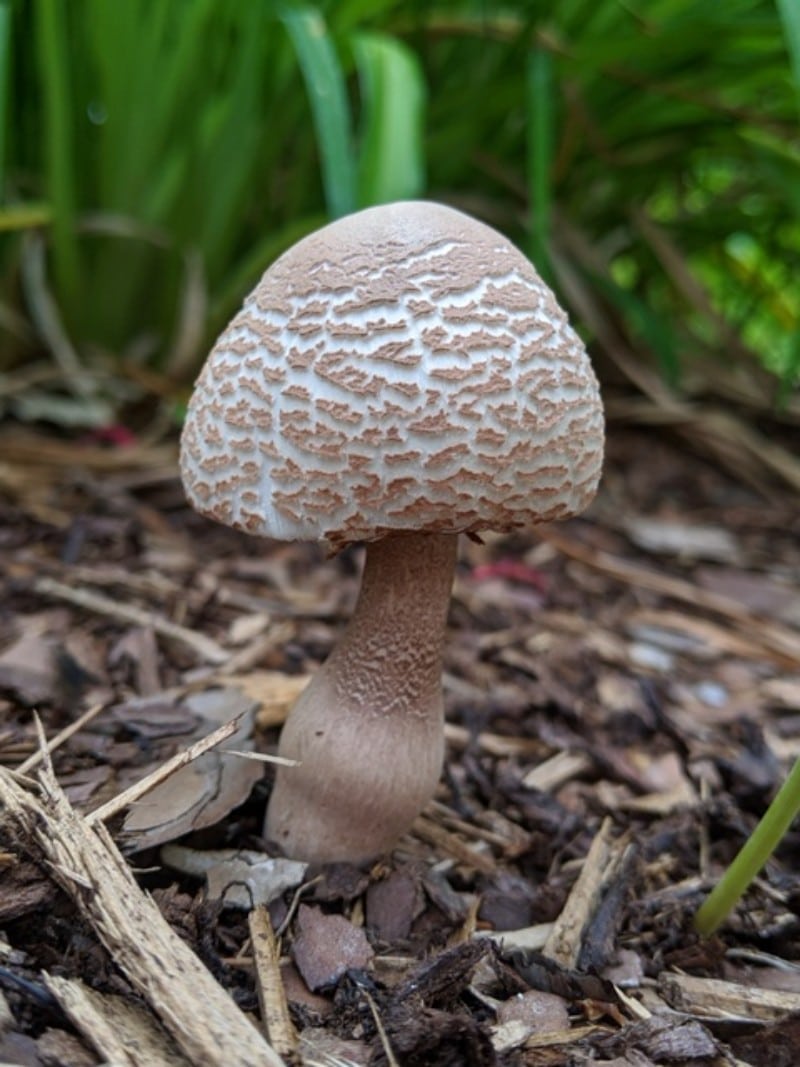
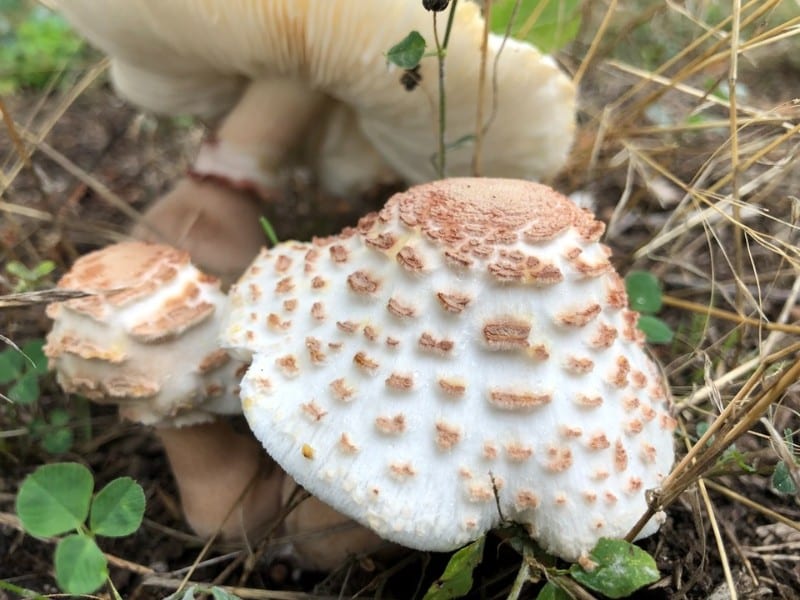
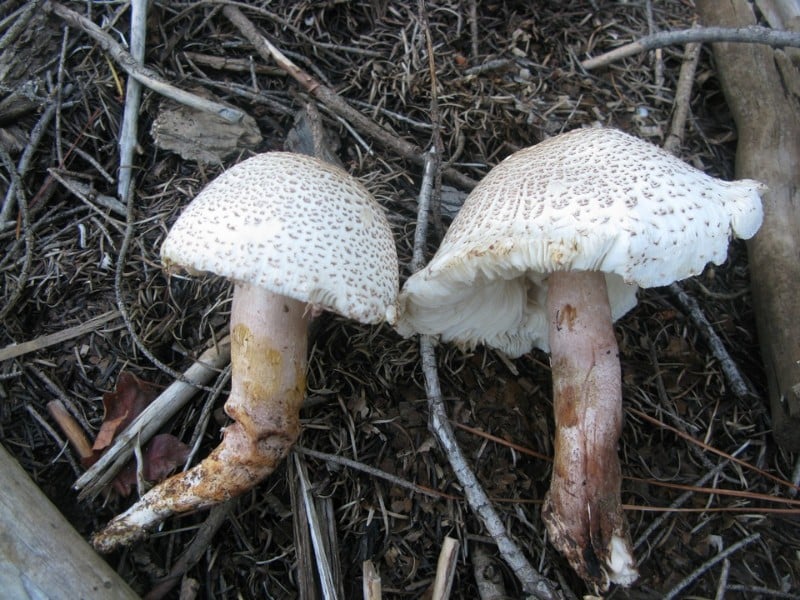
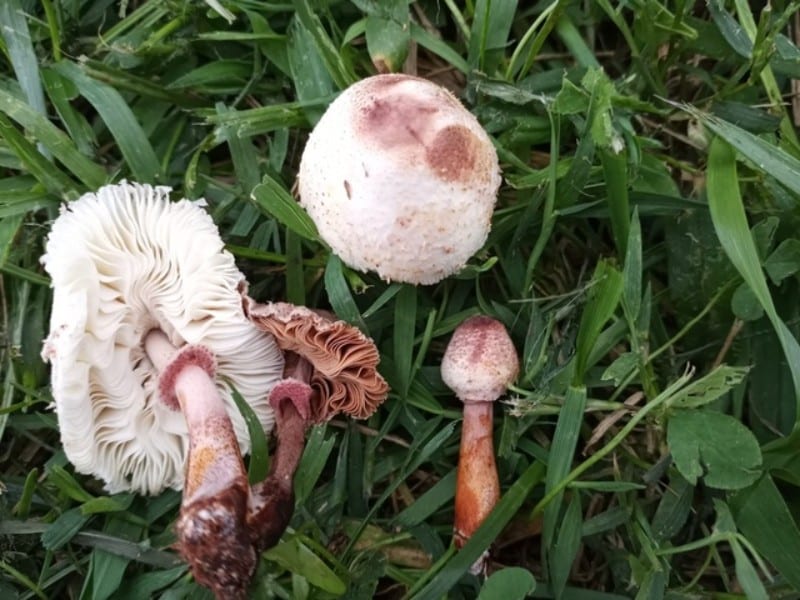
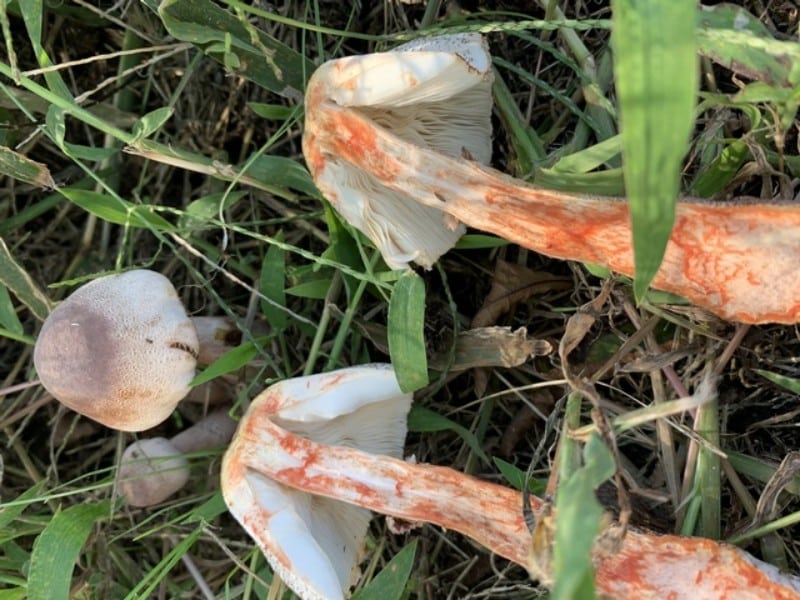
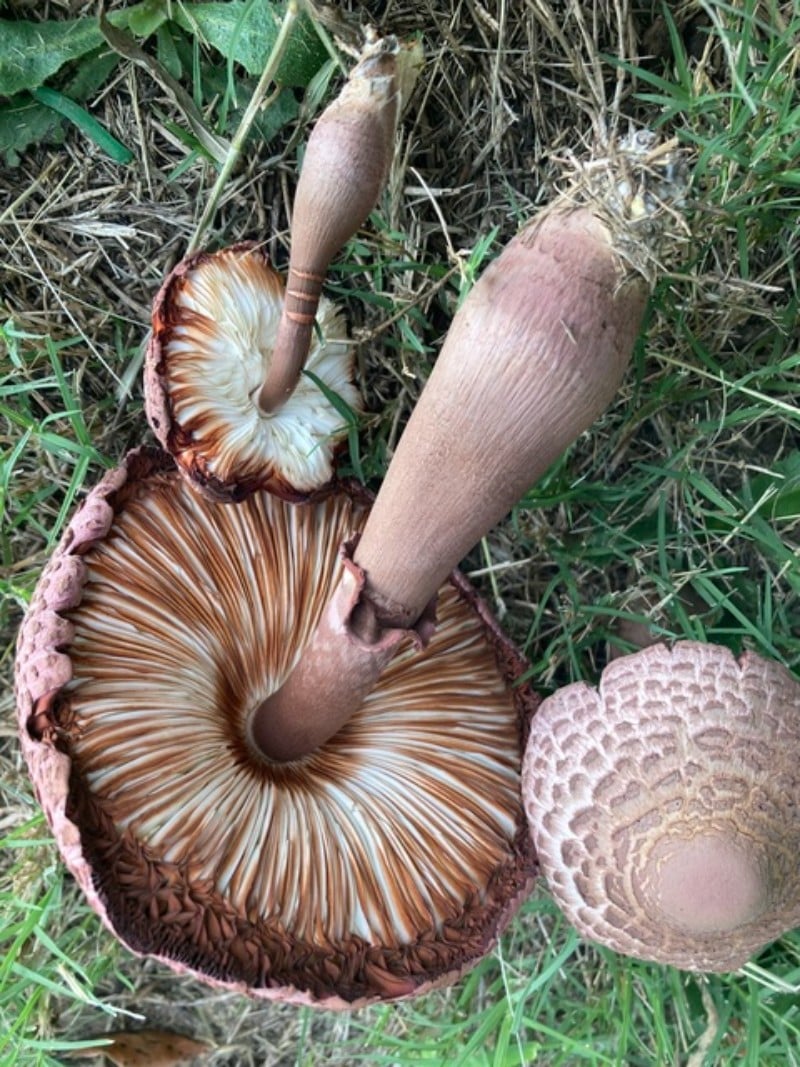
American Parasol Lookalikes
False Parasol, Green-spored Lepiota (Chlorophyllum molybdites)
The false parasol mushroom looks very much like the American parasol overall. It is large, statuesque, with a white cap, brown upraised central hump, and brownish scales. It also grows the same way as the American parasol, starting off rounded, then opening up and flattening out like a dinner plate. It even has a thick ring around the upper portion of the stem.
The primary difference is the gills. The false parasol has white gills that turn grayish or greenish with age. This is quite different from the American parasol’s reddish-brown mature gills. Another difference is the flesh – the false parasol’s flesh does not change color when bruised, while the American parasol’s flesh turns yellowish to reddish-brown.
The final difference is the spore print. The spore print of the false parasol is greenish. If in doubt, do a spore print!
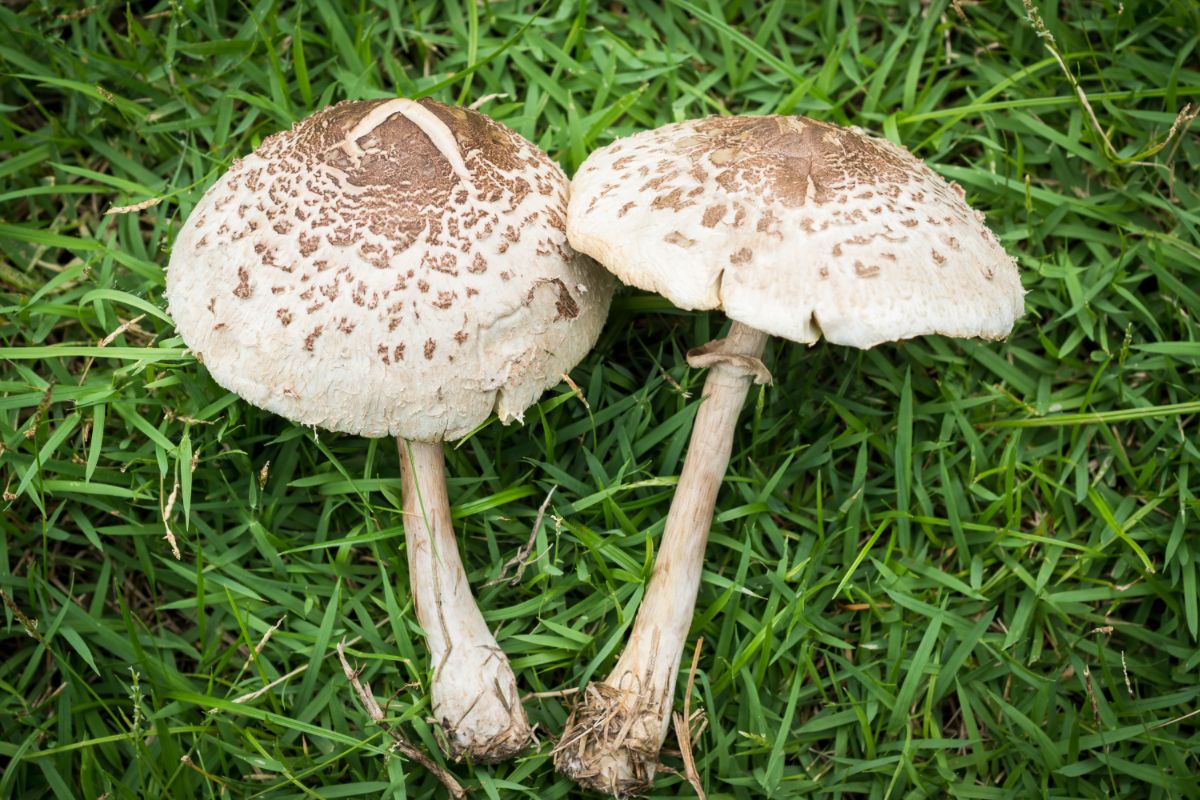
Shaggy Parasol (Chlorophyllum rhacodes)
The lookalike shaggy parasol is large with a white umbrella-shaped cap covered in dense white hairy fibers. On top of the white hairs are thick brown scales, which is how this species gets confused with the American parasol. The white hairs cover the entire cap, which is a good way to differentiate this species from the American parasol, which is not hairy.
The shaggy parasol also has a central brown bump in the cap, white closely spaced gills, and a white ring around the upper stem. The flesh of this species also changes color when cut, starting out a pinkish-orange or saffron color and then turning rusty red (very similar to the American parasol). Both the shaggy parasol and the American parasol have white spore prints. This species is edible.
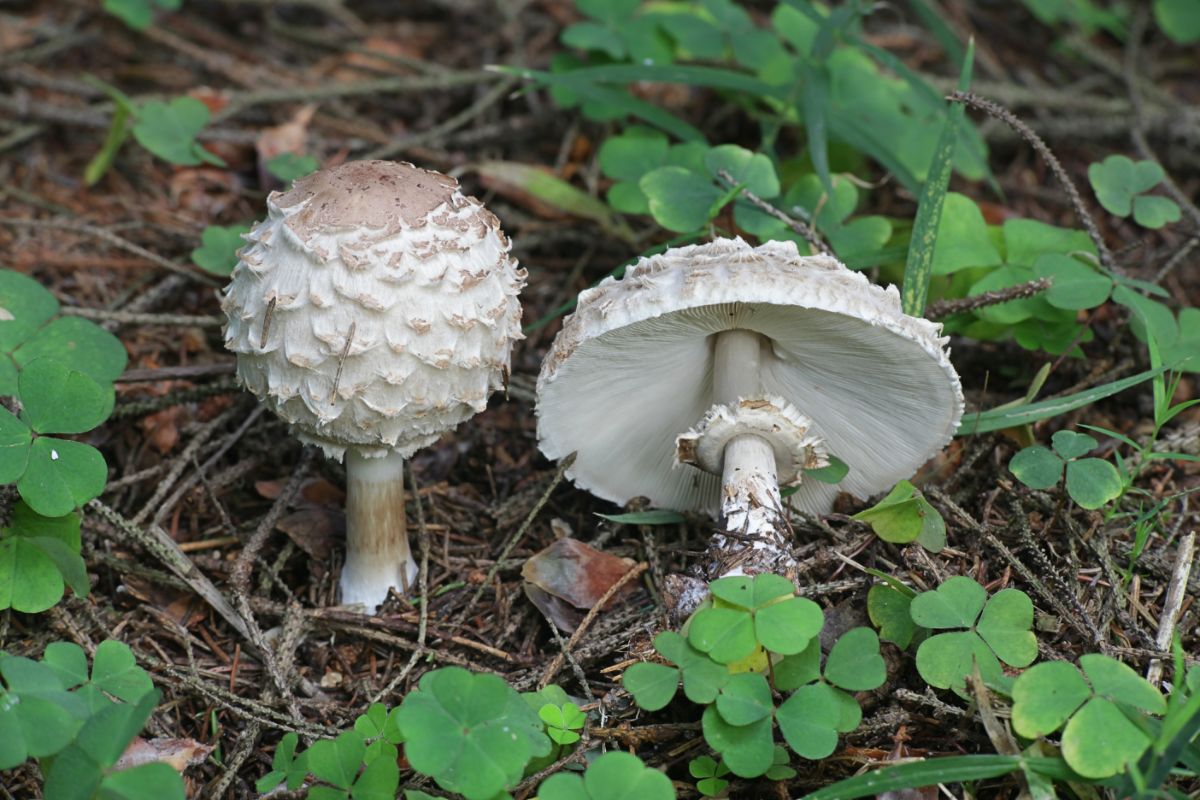
The Parasol Muddle
In North America, we have several mushrooms called parasols. This is likely because so many mushrooms look like parasols, so it is a natural association. However, this can cause SO much confusion. And it’s just one of the reasons why serious foragers and mushroom nerds always try to use the Latin names. Many times, it’s the only way to have any basic understanding of what mushroom people are referring to.
For new foragers and mushroom nerd wannabees, this is frustrating. It’s much easier to remember American parasol than Leucoagaricus americanus. However, to be confident, especially if you intend to eat any found mushrooms, it is essential to use scientific names, especially with all the parasol-called species.
North American Parasols
American Parasol (Leucoagaricus americanus) – edible
Parasol (Macrolepiota procera) – edible
Shaggy Parasol (Chlorophyllum rhacodes) – edible
False Parasol (Chlorophyllum molybdites) – very toxic
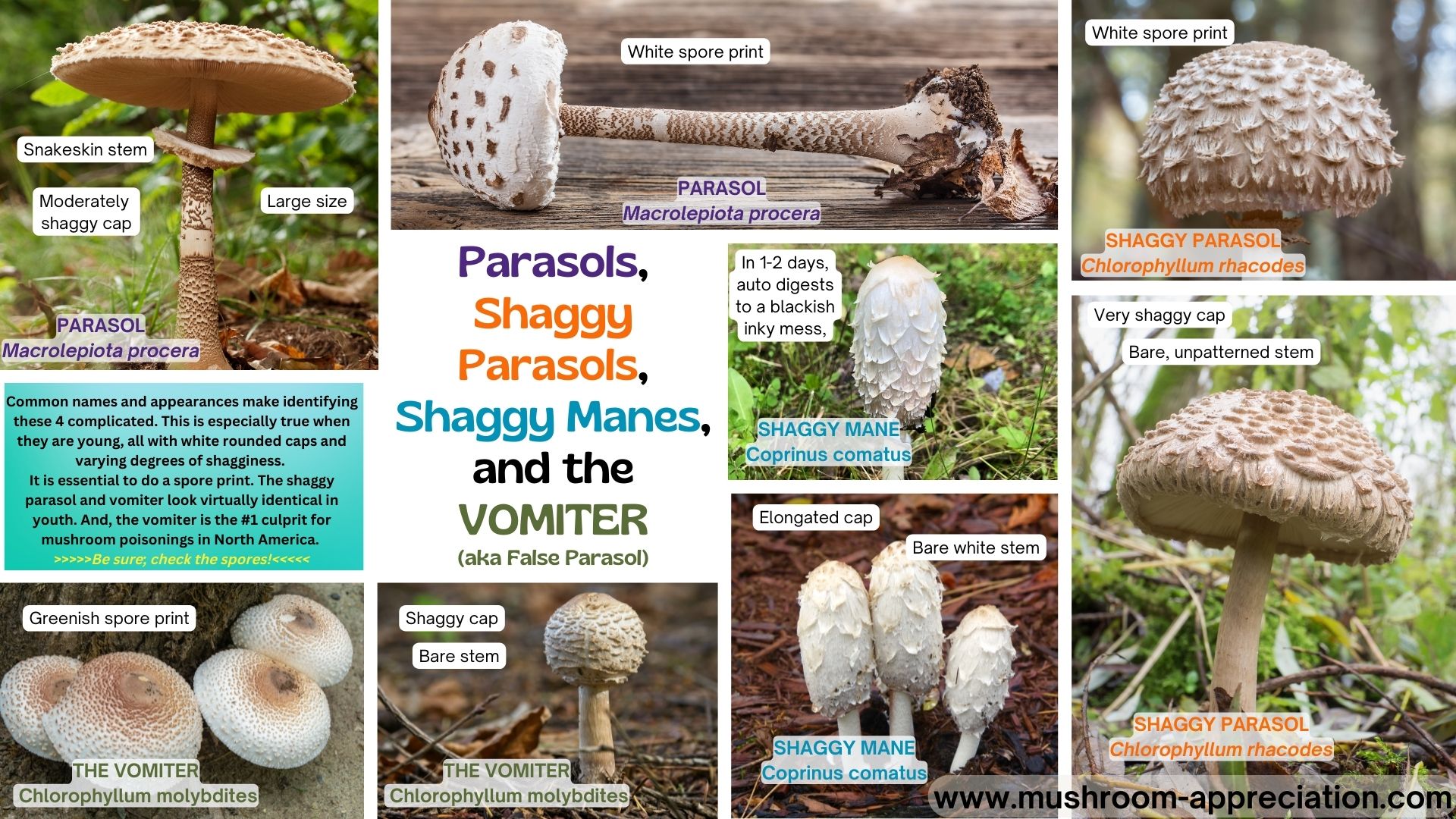
American Parasol Edibility
The American parasol is edible but not recommended due to possible confusion with toxic species like Chlorophyllum molybdites. This is a species for more advanced foragers or those who are very sure of their identification. Chlorophyllum molybdites, the false parasol, is the most commonly consumed toxic mushroom species due to its resemblance to edible parasol-shaped species like the American parasol.
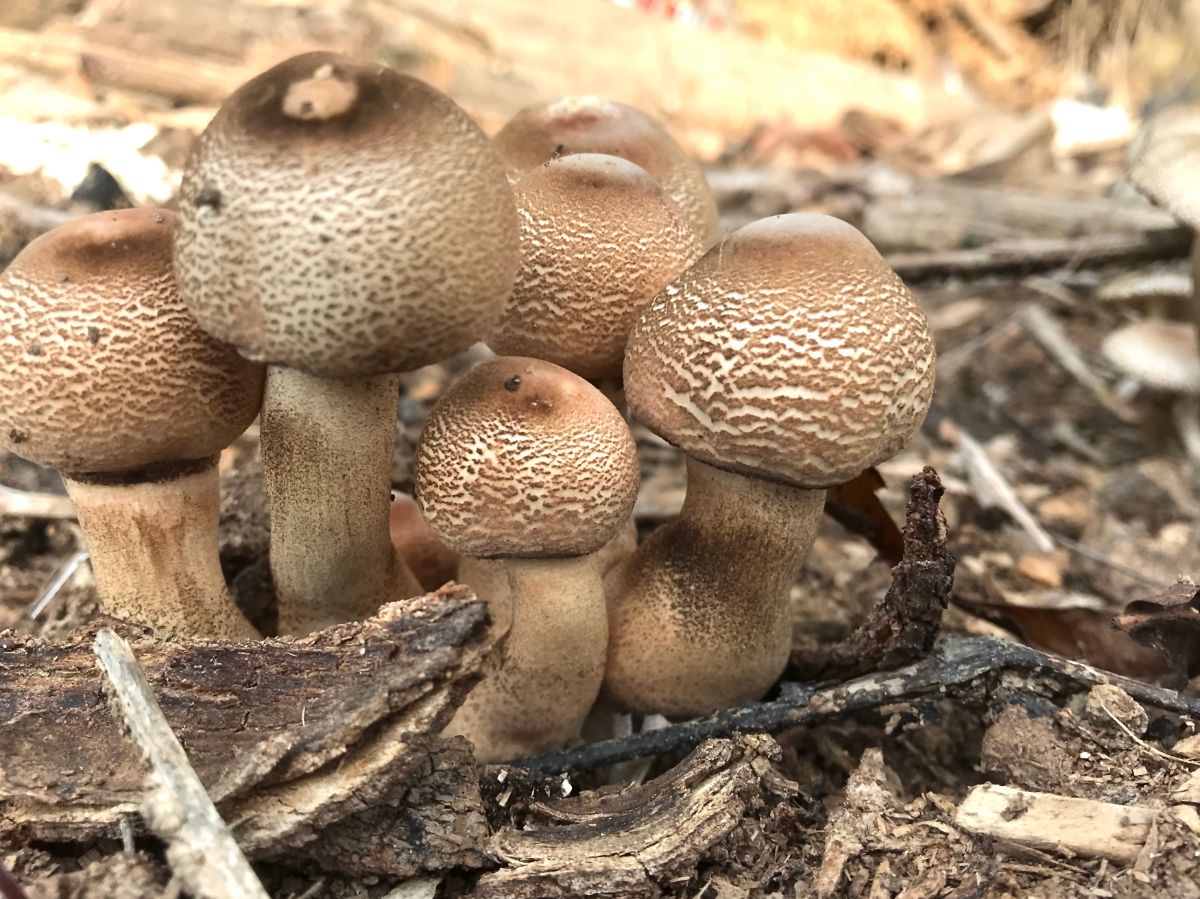
Common Questions About The American Parasol Mushroom
Is the American parasol mushroom medicinal?
Currently, there are no known medicinal properties associated with the American parasol mushroom, aka reddening Lepiota.
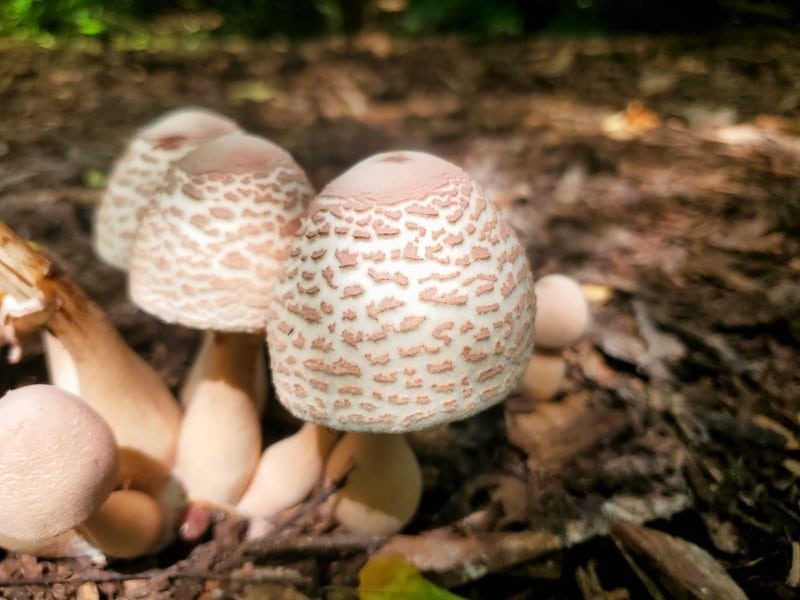

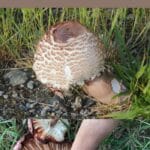
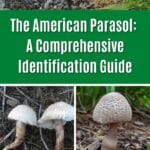


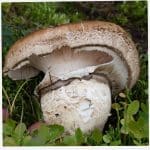
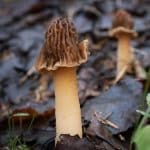
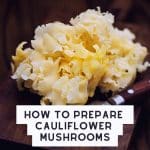
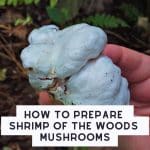
Leave a Reply